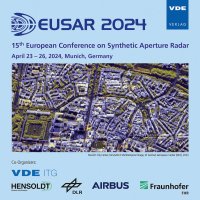Wide area ground motion data: lessons learnt and future perspectives
Konferenz: EUSAR 2024 - 15th European Conference on Synthetic Aperture Radar
23.04.2024-26.04.2024 in Munich, Germany
Tagungsband: EUSAR 2024
Seiten: 6Sprache: EnglischTyp: PDF
Autoren:
Solari, Lorenzo; Lege, Thomas; Kalia, Andre; Lanari, Riccardo; Hooper, Andy
Inhalt:
Since its first description, synthetic aperture radar interferometry (InSAR) has undergone intense research and development that has produced advanced data processing and analysis tools. At the same time, space agencies such as the European Space Agency, have launched and operated missions carrying synthetic aperture radar (SAR) sensors, guaranteeing the constant availability of InSAR primary data. In parallel to this, the computational and algorithmic capability have grown significantly. All these factors made InSAR a mature technique able to deliver deformation measurement on which to build up monitoring services that cover wide areas. The most emblematic of such services is the European Ground Motion Service (EGMS), operational over the whole European continent, but also the national ground motion services (GMS), such as the German one, or the worldwide monitoring of earthquake and volcanoes areas (e.g. EPOSAR or COMET LiCS). This paper provides an overview of current wide area interferometric services and foresees the importance of future constellations for the operational implementation of such services.


